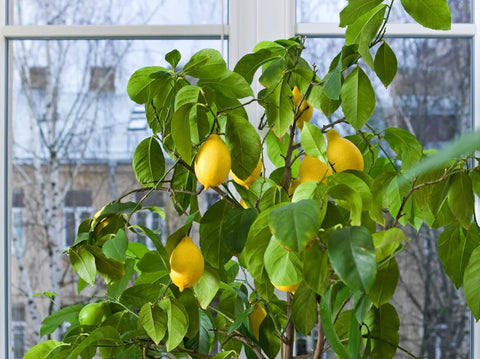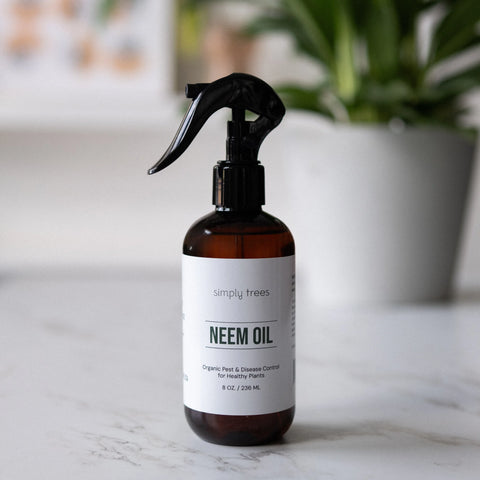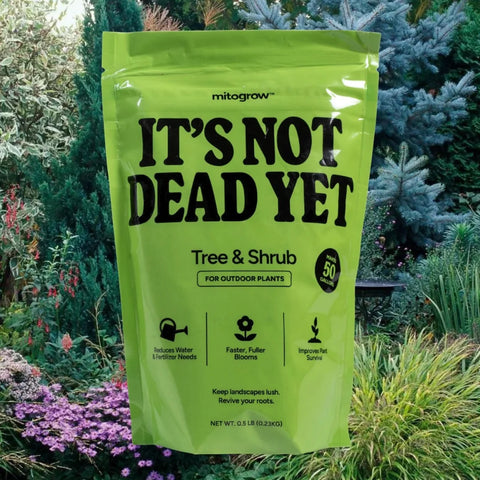Want to grow citrus but don’t live in a warm climate year-round? Container growing is the best solution—especially for lemons, limes, oranges, and kumquats. With the right pot, soil, and seasonal care, you can enjoy fragrant blooms and fresh fruit from your patio, balcony, or sunny living room.
In this guide, we’ll walk you through everything you need to know to grow citrus trees successfully in containers—no matter your zone.
→ Shop Citrus Trees at Simply Trees
Why Grow Citrus in a Container?
Container citrus trees offer flexibility, mobility, and year-round enjoyment. Whether you’re protecting your tree from cold winters or want a compact, manageable fruit tree, growing citrus in pots is a smart choice.
-
Great for zones below 9
-
Easy to move indoors during frost
-
Perfect for patios, porches, and decks
-
Adds greenery, fragrance, and flavor to your home
What Citrus Varieties Grow Well in Pots?
All of the citrus trees sold at Simply Trees are well-suited for container growing:
-
Meyer Lemon
-
Improved Meyer Lemon
-
Key Lime
-
Persian Lime
-
Washington Navel Orange
-
Valencia Orange
-
Moro Blood Orange
-
Kumquat
-
Satsumas
These trees naturally stay compact or can be pruned to maintain a small size, making them ideal for pots.
Pot Size & Sizing Tips
At Simply Trees, we ship our citrus trees in a range of pot sizes depending on the variety and maturity.
-
Our standard citrus trees typically come in 10–12 inch nursery containers, ideal for early-stage growth or patio container gardening.
-
Larger sizes—like our 5–6 ft Jumbo and 6–7 ft Jumbo trees—are shipped in 10-gallon containers, which are approximately 15 inches wide and 17 inches tall.
When repotting:
-
Choose a container that’s 2–4 inches wider than the current pot. Some citrus trees, like our orange trees, should be potted in at least a 10 gallon pot to provide room for growth.
-
For long-term growth, size up to a 15–25 gallon container
-
Always use a pot with drainage holes and aim for at least 14–20 inches deep
Must-haves:
-
Drainage holes (non-negotiable)
-
Lightweight materials for easy mobility (plastic, resin, or fabric pots)
-
Optional: rolling plant caddies for patio use
Tip: Repot your tree every 2–3 years to refresh soil and prevent root binding.
Best Soil for Citrus in Containers
Citrus trees demand excellent drainage and root aeration.
Use:
-
A well-draining potting mix with perlite or bark
-
A mix designed for citrus, palms, or succulents works well
-
Avoid garden soil or heavy mixes that stay wet
You can blend your own with:
-
2 parts peat moss or coco coir
-
1 part perlite or pumice
-
1 part compost or pine bark fines
Sunlight & Placement
Citrus trees are sun lovers. Aim for:
-
6–8+ hours of full sun per day
-
South or southwest-facing exposure for indoor trees
-
Outdoors: place against a sunny wall or fence to trap heat
Rotate your tree every few weeks to ensure even growth. If light is limited indoors, consider a full-spectrum grow light for winter months.
Watering Container Citrus Trees
Container trees dry out faster than in-ground trees. Here’s how to keep citrus hydrated:
-
Water when the top 2 inches of soil are dry
-
In warm months, this may be every 2–3 days
-
In cooler or indoor settings, reduce to weekly or less
-
Always check moisture before watering—avoid soggy soil
Use room-temperature water and soak thoroughly until it drains from the bottom.
Fertilizing Citrus in Containers
Important: All Simply Trees citrus trees are pre-fertilized with a slow-release organic blend in the soil. Do not fertilize right away after delivery.
When to start fertilizing:
-
Begin in early spring (March) after new growth appears
-
Use a citrus-specific organic fertilizer every 6–8 weeks through summer
-
Stop fertilizing by early fall to prevent tender growth going into winter
Top organic citrus fertilizers:
-
Espoma Citrus-Tone
-
Down to Earth Citrus Mix
-
Jobe’s Organic Fruit & Citrus Spikes
Pruning & Shaping
Container citrus trees are easy to shape and maintain:
-
Prune in late winter or early spring before new growth
-
Remove:
-
Suckers (growth below the graft line)
-
Dead or damaged branches
-
Awkward branches growing inward or crossing
-
-
Maintain a compact shape for airflow and fruit access
Use clean pruners and avoid heavy cuts right before winter.
Overwintering Container Citrus Trees
In zones 8 and below, bring citrus indoors before temps drop below 40°F.
-
Acclimate the tree by moving to a shady porch for a few days first
-
Indoors: place near a south-facing window or under grow lights
-
Keep temperatures between 55–65°F
-
Reduce watering and do not fertilize during winter dormancy
Come spring, reverse the process by slowly reintroducing your tree to outdoor sun over 7–10 days.
Harvesting Citrus in Pots
Yes—you can grow fruit in a pot!
-
Fruit ripens in late fall to spring, depending on the variety
-
Most citrus take 6–9 months from bloom to ripe fruit
-
Pick when fruit is fully colored and slightly soft
-
Use sharp pruners to avoid damaging stems
Smaller trees = smaller harvests, but flavor stays the same.
Final Tips
Growing citrus in containers is easy, rewarding, and perfect for any climate. With the right setup, your lemon, lime, or orange tree can provide fragrant blooms and homegrown fruit for years to come.





